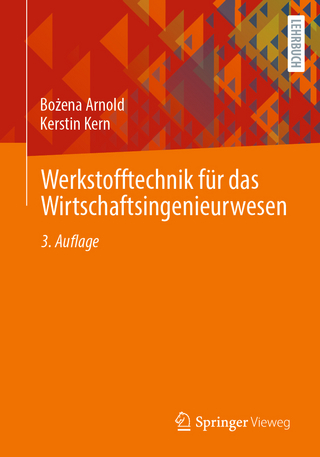
Introduction to Fluid Mechanics
CRC Press (Verlag)
978-1-138-58165-4 (ISBN)
- Keine Verlagsinformationen verfügbar
- Artikel merken
A time-tested book that has proven useful in various fluid mechanics and turbomachinery courses, this volume assumes knowledge of calculus and physics in its use of mathematics to model physical principles in fluid mechanics. Among its many useful features, this book:
Updates advances and relevant examples
Introduces concepts of fluid statics and control/volume approach of determining flow
Carefully explains topics using step-by-step examples
Emphasizes applications areas, with extensive resources for design problems
Uses both SI units and British gravitational units
Includes computer and design problems formulated for use with a spreadsheet in any of the traditional programming languages
The author includes open-ended chapter-end problems designed to systematically improve the students’ ability to understand and apply the equations of fluid mechanics to various practical problems associated with scenarios such as flow from a draining coffee pot or drag force exerted on a bicycle-rider combination. Problems are arranged so that the easier ones are presented first, to build students’ confidence and aid learning, and these problems are grouped by topic, making them easier to use for both instructors and students.
With an abundance of new material, this book is a thorough and comprehensible presentation of fluid mechanics from a practical viewpoint, rather than an encyclopedic and inaccessible volume.
William S. Janna received his BSME, MSME, and PhD from the University of Toledo. He joined the Mechanical Engineering Faculty of The University of New Orleans in 1976, where he became department chair, and served in that position for four years. Subsequently, he joined the University of Memphis in 1987 as chair of the Department of Mechanical Engineering. He served as associate dean for graduate studies and research in the Herff College of Engineering. His research interests include boundary layer methods of solution for various engineering problems, modeling the melting of ice objects of various shapes, and the study of sublimation from various geometries. He is the author of three textbooks and a member of ASME. He teaches courses in heat transfer, fluid AQ1 mechanics, and design of fluid=thermal systems. He has designed and constructed a number of experiments in the fluid mechanics and heat transfer laboratories.
Chapter 1 Fundamental Concepts
Definition of a Fluid
Dimensions and Units
Properties of Fluids
Liquids and Gases
Continuum
Chapter 2 Fluid Statics
Pressure and Pressure Measurement
Hydrostatic Forces on Submerged Plane Surfaces
Hydrostatic Forces on Submerged Curved Surfaces
Equilibrium of Accelerating Fluids
Forces on Submerged Bodies
Stability of Submerged and Floating Bodies
Chapter 3 Basic Equations of Fluid Mechanics
Kinematics of Flow
Control Volume Approach
Continuity Equation
Momentum Equation
Energy Equation
Bernoulli’s Equation
Chapter 4 Dimensional Analysis and Dynamic Similitude
Dimensional Homogeneity and Analysis
Dimensionless Ratios
Dimensional Analysis by Inspection
Similitude
Correlation of Experimental Data
Chapter 5 Flow in Closed Conduits
Laminar and Turbulent Flow
Effect of Viscosity
Pipe Dimensions and Specifications
Equation of Motion
The Friction Factor and Pipe Roughness
Simple Piping Systems
Minor Losses
Forces Exerted on Fittings by Moving Fluids
Pipes in Parallel
Pumps and Piping Systems
Chapter 6 Flow over Immersed Bodies
Boundary-Layer Growth and Separation
Drag on Various Two-Dimensional Bodies
Drag on Various Three-Dimensional Bodies
Applications to Ground Vehicles
Lift on Airfoils
Chapter 7 Flow in Open Channels
Types of Open-Channel Flows
Open-Channel Geometry Factors
Energy Considerations in Open-Channel Flow
Critical Flow Calculations
Equations for Uniform Open-Channel Flow
Hydraulically Optimum Cross Section
Nonuniform Open-Channel Flow
Chapter 8 Compressible Flow
Sonic Velocity and Mach Number
Stagnation Properties and Isentropic Flow
Flow through a Channel of Varying Area
Normal Shock Waves
Compressible Flow with Friction
Compressible Flow with Heat Transfer
Chapter 9 Turbomachinery
Equations of Turbomachinery
Axial-Flow Turbines
Axial-Flow Compressors, Pumps, and Fans
Radial-Flow Turbines
Radial-Flow Compressors and Pumps
Power-Absorbing versus Power-Producing Machines
Dimensional Analysis of Turbomachinery
Performance Characteristics of Centrifugal Pumps
Performance Characteristics of Hydraulic Turbines
Chapter 10 Measurements in Fluid Mechanics
Measurement of Viscosity
Measurement of Static and Stagnation Pressure
Measurement of Velocity
Measurement of Flow Rate in Closed Conduits
Measurements in Open-Channel Flow
Chapter 11 The Navier–Stokes Equations
Equations of Motion
Applications to Laminar Flow
Graphical Solution Methods for Unsteady Laminar Flow Problems
Introduction to Turbulent Flow
Chapter 12 Inviscid Flow
Equations of Two-Dimensional Inviscid Flow
Stream Function and Velocity Potential
Irrotational Flow
Laplace’s Equation and Various Flow Fields
Combined Flows and Superposition
Inviscid Flow Past an Airfoil
Chapter 13 Boundary-Layer Flow
Laminar and Turbulent Boundary-Layer Flow
Equations of Motion for the Boundary Layer
Laminar Boundary-Layer Flow over a Flat Plate
Momentum Integral Equation
Momentum Integral Method for Laminar Flow over a Flat Plate
Momentum Integral Method for Turbulent Flow over a Flat Plate
Laminar and Turbulent Boundary-Layer Flow over a Flat Plate
Index
| Erscheint lt. Verlag | 31.12.2023 |
|---|---|
| Zusatzinfo | 1325; 70 Tables, black and white; 494 Illustrations, black and white |
| Verlagsort | London |
| Sprache | englisch |
| Maße | 171 x 241 mm |
| Themenwelt | Technik ► Maschinenbau |
| ISBN-10 | 1-138-58165-8 / 1138581658 |
| ISBN-13 | 978-1-138-58165-4 / 9781138581654 |
| Zustand | Neuware |
| Informationen gemäß Produktsicherheitsverordnung (GPSR) | |
| Haben Sie eine Frage zum Produkt? |
aus dem Bereich


